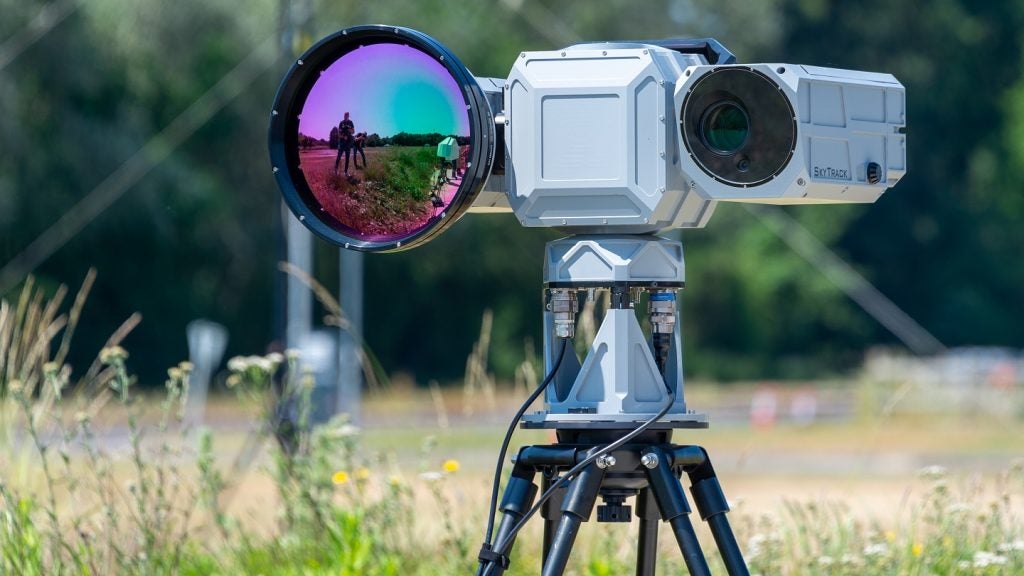
In the political, economical and military environment, changes from globalisation to limited budgets have been widely publicised. But new non-governmental aggressors have led to new military scenarios and innovations, creating a dramatically different vision for the future of defence, according to Prof. Dr Holger H Mey, head of advanced concepts defence and security at EADS, who was also a participant of the German Association for Defence Technology symposium.
“The adversary becomes more competent and will have more instruments of power at his disposition than we could want,” he warns.
New “mega” trends in technology will need to be dealt with in the future, including nanotechnology (nano assemblers), biotechnology (genetic engineering), robotics (cyborgs) and artificial intelligence (cyberspace). And, according to Mey, these technologies not only offer new opportunities, but also limits for the military. For example, consider jammers for GPS devices that are now available, or the technologies that allow adversaries to hide between civilian populations. This means the technology itself is no longer the crucial aspect for defence forces. Instead, military members must be looking towards its intelligent and creative use. “Even a transparent battlefield does not defend from surprises,” he says.
The defence industry will also have to take into account other facts such as cuts to budgets and personal strength. It will have to offer solutions such as new financing models and increased automation to overcome these challenges. New military programmes will be smaller in size, have a much shorter research and development time and will include larger portions of commercial off-the-shelf technologies. This means that software platforms and communications systems are likely to become more important, a trend that will drive the markets in these areas, and the subcontractors helping to deploy them.
The EU – growing the defence market
See Also:
The EU market will have some challenges of its own next year. The Lisbon strategy for the EU commits member nations to strong growth and employment targets. EU Commission director general of enterprise and industry Tjien Khoem Liem says this is part of the commission’s goal to strengthen the European defence industry. In December 2007, it passed a defence package to create a solid European defence industry. Last year it also published the Intra-EU Transfers Directive and the Procurement Directive, which will be implemented by member countries in the middle of 2011.
How well do you really know your competitors?
Access the most comprehensive Company Profiles on the market, powered by GlobalData. Save hours of research. Gain competitive edge.

Thank you!
Your download email will arrive shortly
Not ready to buy yet? Download a free sample
We are confident about the unique quality of our Company Profiles. However, we want you to make the most beneficial decision for your business, so we offer a free sample that you can download by submitting the below form
By GlobalDataThe Intra-EU Transfers Directive is designed to simplify and harmonise national licensing regimes while improving transparency through the use of a common set of licences. The Procurement Directive coordinates national award procedures for defence and sensitive security procurement. Both will help unify the European defence market.
German Ministry of Defence Ministerialdirigent Armin Schmidt-Franke says he is concerned these changes could spell the end for national procurement, which would only be required for intelligence. Defence companies working with EU nations should be prepared for such a massive change, which would drastically affect competition. Public procurement law specialist and lawyer BHO Legal says that as a result of the directive, the number of tenders within the security-sensitive area will rise and the use of Article 346 will decrease.
Standardisation is important for a single European market. Realising this, the EU produced the European Handbook for Defence Procurement. It is designed to provide a practical tool to reduce divergence in standards, lead to better alignment of national procurement practices, support cooperation and enhance interoperability to the benefit of member states and industry. This document is now in the third and final stage of its development, expected for publication somewhere near the middle of 2011.
Growing the market for SMBs
The commission is also increasing its focus on the small and medium-sized company environment. It has begun a Small Business Act and a series of conferences to strengthen the smaller and medium-sized business market for the defence sector. According to Liem, a final conference in Brussels will present a list containing accordant initiatives and measures to achieve this goal at the end of May 2010.
The Lisbon Treaty also gives more power to the European Defence Agency (EDA). According to the treaty, it will determine the operative needs of the defence sector and assist actions to meet its guidelines, strengthening the industrial and technological basis for the defence sector.
Rheinmetall AG’s Dr Heinz-Josef Kruse says the industry has to follow the development of the EDA very closely to actively go along with the slow transition of programmes. “It will still take a long time [before] Brussels will really become a defence marketplace,” he says.
In his speech at the symposium, Liem said that these changes were all important if defence technology providers were to survive, given the US market was becoming increasingly difficult to enter for companies without production lines in the nation. “The European defence industry must be able to keep up with its US competitors regarding innovation and quality to achieve better market access,” he said. To lower the technological dependence from the US, amongst others, key technologies and industrial capacities have to be identified, developed and secured in Europe.
Innovation also means investment into research and development programmes. In total, the EU invests only 5% of its defence budget into these sectors. An increase would give a push to innovations in the European defence industry and call for the member countries to look towards cooperation on all levels of politics, industry and science.







